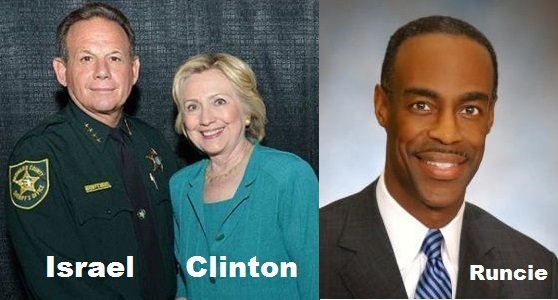BOMBSHELL REPORT: BROWARD COUNTY SCHOOLS AND POLICE COLLUDED TO SHIELD CRIMINAL STUDENTS
Clues about how Nikolas Cruz slipped through cracks are emerging
Bombshell claims alleging collusion between Broward County law enforcement and the Broward school district to protect criminal students from arrests and disciplinary action have been leveled by a journalist familiar with the protocols in practice.
Some clues may have emerged from a report chronicled by the editors of the Conservative Treehouse (CTH), an independent blog, who have provided corroborating documentation that paint a very convincing picture for the circumstances that may have enabled Cruz to slip through the cracks.
“I spent about 18 months in 2012, 2013 and 2014 investigating Broward and Miami-Dade school policies and how those policies transfer to law enforcement practices,” CTH explains. “What I stumbled upon was a Broward County law enforcement system in a state of conflict. The Broward County School Board and District Superintendent, entered into a political agreement with Broward County Law enforcement officials to stop arresting students for crimes.”
“The motive was simple. The school system administrators wanted to ‘improve their statistics’ and gain state and federal grant money for improvements therein.”
The 2013 “Collaborative Agreement On School Discipline” between the School Board of Broward County and the Sheriff of Broward Country, as well as the Fort Lauderdale Branch of the NAACP and a variety of other state and local legal bodies, can be found HERE.
In short, the agreement established new standards and practices by which law enforcement would seek alternatives to arresting students who had committed crimes or “minor disturbances,” with a specific focus on “students of color, students with disabilities and LGBTQ students,” who were “disproportionately impacted by school-based arrests for the same behavior as their peers.”
CTH asserts that the types of lawbreaking being swept under the rug quickly escalated from minor offenses to serious felonies.
“The need to continue lowering the arrests year-over-year meant that increasingly more severe unlawful behavior had to be ignored. Over time even the most severe of unlawful conduct was being filtered by responding police,” CTH writes. “We found out about it, when six cops blew the whistle on severe criminal conduct they were being instructed to hide.”
Media reports corroborate the external results of the new policies implemented in Broward, and school district superintendent Robert Runcie, who had been brought in from the Chicago public school systemto mitigate the massive issues in Broward, was hailed as a hero as suspensions magically dropped by 40% percent and arrests by 66% in just two years.
The American Prospect reported at the time –
“Broward announced broad changes designed to mitigate the use of harsh punishments for minor misbehavior at the beginning of this school year. While other districts have amended their discipline codes, prohibited arrests in some circumstances, and developed alternatives to suspension, Broward was able to do all these things at once with the cooperation of a group that included a member of the local NAACP, a school board member, a public defender, a local sheriff, a state prosecutor, and several others.”
In 2015, Runcie was invited to join an Obama White House school discipline summit to share his ‘secrets to success’ in lowering student arrests and suspensions.
In 2016, Runcie was awarded ‘Florida Superintendent of the Year.’
The Miami Herald alluded to the types of oversights and ‘missed’ signs that enabled Nikolas Cruz to glide through the system in a report on Wednesday.
“And long before Cruz embarked on the worst school shooting in Florida history, Broward Sheriff’s Office deputies had multiple warnings that the 19-year-old was a violent threat and a potential school shooter, according to records released Thursday.”
“In November, a tipster called BSO to say Cruz ‘could be a school shooter in the making,’ but deputies did not write up a report on that warning. It came just weeks after a relative called urging BSO to seize his weapons. Two years ago, according to a newly released timeline of interactions with Cruz’s family, a deputy investigated a report that Cruz ‘planned to shoot up the school’ — intelligence that was forwarded to the school’s resource officer, with no apparent result.”
On Wednesday, Broward Sheriff Scott Israel revealed that an armed Parkland school officer, Scot Peterson, arrived on the scene at Marjory Stoneman Douglas High School as Cruz was in the process of killing 17 innocent victims, but never went inside the building to render aid.


No comments:
Post a Comment
Thanks for commenting. Your comments are needed for helping to improve the discussion.